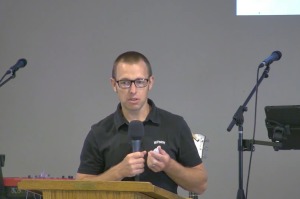World Vision Works to End Global Water Crisis With Innovative Manual Pump
World Vision, an international Christian humanitarian organization, has been working for nearly three decades to bring clean water to the most remote areas of the world, and with the invention of a manual, smaller plastic pump, the relief organization is hoping to expand its clean water outreach even farther.
The pump, according to Randy Strash, World Vision's water, sanitation, and hygiene strategist, consists of a small, plastic PVC pipe and PVC fittings which costs only $25 to assemble, compared to $700 to $800 for standard stainless steel pumps previously used in many parts of the world.
Although the pump's plastic composition seems flimsy, it will actually last five to seven years without any need for maintenance, according to Strash.
Additionally, the pump is lightweight and small, making it easy to transport via pickup truck or motorbike, and therefore, in comparison to the heavy machinery traditionally used for pumping water, this new pump will be able to "access communities beyond reach."
The pump uses natural hydraulics instead of suction, therefore making it very easy to use, so much so that a child can operate the pump.
Due to the pump's easy use and lack of maintenance needs, Strash confirms that communities will not require extensive training on the pump, therefore "greatly reducing the cost of accessing safe water for many."
The pump's technology was developed by Water4, an initiative founded in 2008 and dedicated to eradicating the global water crisis by equipping communities in Central America, Africa and parts of Asia with the supplies and knowledge needed to drill their own wells.
As Strash told CP, World Vision hopes to increase local entrepreneurship in developing countries with the help of this new plastic pump.
"Our hope is to spin off teams of entrepreneurs to continue to use the equipment and skills to build new pumps in their countries from their own materials," Strash told CP.
Strash contends that the pump's proliferation will create a market, create jobs, and stimulate local economy while simultaneously addressing the global demand for clean water.
A study conducted by Stanford University in the 2000s found that freshwater availability and water fetching distance affect child health in sub-Saharan Africa.
According to the study, "a 15-min decrease in one-way walk time to water source is associated with a 41 percent average relative reduction in diarrhea prevalence, improved anthropometric indicators of child nutritional status, and a 11 percent relative reduction in under-five child mortality."
"These results suggest that reducing the time cost of fetching water should be a priority for water infrastructure investments in Africa," the study concluded.
As Strash contends, the plastic manual pumps are able to be installed in local communities where traditional big rigs cannot fit, and therefore these smaller pumps greatly reduce the risk of water contamination due to their proximity to the community.
Strash has big plans for the communities using these new plastic pumps, saying that he believes eventually they will result in better environmental conditions, turning a community from "arid to lush."
"The whole idea is to proliferate the number of wells. You can get more water out of the wells because they're closer and the pump is more efficient," Strash explained.
"Maybe people will start growing vegetables that are hand-watered, and they'll have vegetables growing year round," he said, adding that easy access to water can result in "three crops, instead of one."
Currently, World Vision is working with the Water4 initiative to have these new pumps installed in Ethiopia, Ghana, Mali, and Niger, along with several other countries.
The manual pumps have been used in Angola for the past several years.
Nearly 5,000 children die every day due to the lack of access to clean water, which is why the United Nations designated Friday World Water Day, so that this continued epidemic may be ended once and for all.
World Vision has managed to provide clean water to over 11 million people during its efforts over the past 25 years, and is striving to reach an additional six million in the next five years.




























